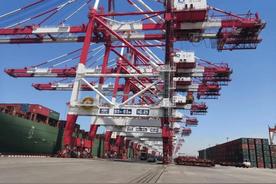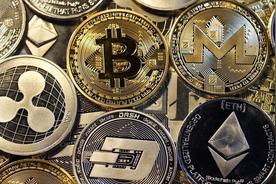
导读
美元在国际货币体系中的核心地位稳固。美元作为交易媒介、价值储存和记账单位的需求非常强劲,具有市场流动性和网络外部性优势。美国的国际投资地位和国际投资头寸表明世界对美元的强大需求。
但随着经济重心向亚洲特别是中国转移,形成了由美元、欧元和人民币构成的三极货币体系。即便如此,美元仍保持着主要储备货币和价值储存的地位。全球金融市场的扩大进一步巩固了美元在国际货币体系中的核心地位。展望未来,国际货币体系的结构可能会受到地缘政治紧张局势、中国资本项目开放以及央行数字货币引入的影响。
全球货币政策的协调主要围绕美国、中国、欧洲、英国和日本等几个国家展开,其他大多数国家只是价格接受者。美联储的政策决策对其他国家产生了强大的影响,特别是在2010年代。
美元为中心的国际货币体系并非直接导致了美国的贸易逆差和中国的贸易顺差。这些问题与国家内部的政策因素和干预有关,而不是国际货币体系本身。当前美国的贸易逆差与疫情相关的财政支出和全球供应链的中断有关。
当前国际货币体系下的全球流动性扩张过度,超过了储蓄率。全球流动性扩张主要是由各国宽松的货币政策引起的,不是国际货币体系的问题。杠杆过高主要是由于资产估值的增长。唯一的例外是美国,因为外国持有美国金融资产的比例不断增加,这表明对美国金融资产的偏好一直持续。
当前的国际货币体系以美元为中心,但也存在挑战,比如不完善的金融监管框架、扩张性宏观经济政策以及金融全球化的结构性缺陷。
随着全球金融市场的规模不断增长,预计国际货币体系将围绕着跨国资本流动和最大使用份额的货币构建,其中美元和欧元处于主导地位。随着中国逐渐实现资本项目可兑换,人民币的作用也将相应增加。人民币在国际货币体系中的角色将由市场决定,并受到非国际货币体系问题的影响。
作者 | 李一衡(Il Houng Lee),韩国央行货币政策委员会原委员
英文原文
A Short Review of the International Monetary System and Future Prospects
Il Houng Lee, Senior Associate Researcher, Vesalius College (CSDS Center), Former Member of Monetary Policy Board, Bank of Korea
There was growing expectation in the early 2010s that with the shift in economic balance toward Asia, notably China, the share of the RMB in international payments would rise, culminating in a tripolar currency system consisting of the US dollar, the Euro and the RMB1. Even then, the US Dollar was expected to remain as the main reserve currency and a store of value in the foreseeable future. Since then, the use of the RMB as a settlement currency has steadily expanded and the centrality of the US dollar in the International Monetary System (IMS) has further cemented with the expansion of the global financial market. Going forward, the structure of the IMS will be shaped, plausibly, by the evolution of geopolitical tension (an issue outside the scope of this note), China’s capital account openness, and the introduction of Central Bank Digital Currency (CBDC). This note asks a couple of questions on the current IMS to assess what else might be involved in the future path of the IMS2.
01
Has the centrality of the US dollar in the IMS cemented?
The dominance of the US dollar in the IMS reflects its strong demand as a medium of exchange, store of value and unit of account. Inertia in demand rests in the natural advantage of the incumbent, e.g., the network externalities3, or equivalently market liquidity, i.e., conversion into goods and services at minimum cost at short notice. In particular, the store of value motive is guided by the expected future value of the currency as well as “future prospects” of market liquidity, i.e., global demand for a currency is determined by the market’s expectation of the issuing country’s long-term growth prospects which presumes stability of the governance structure and full access to the capital market.
The International Investment Position (IIP) of a country can be regarded as a measure of demand for the currency it issues. IIP data indicate strong preference for the US as an investment destination and equivalently for the US dollar. The US accounts for 26% of global IIP Liabilities and 18% of assets in 2021. Its assets and liabilities combined amounts to 3.5 times of its GDP, which compares with 1.8 times its GDP about two decades ago, notwithstanding valuation changes. This huge increase took place at a time when the size of the global IIP itself rose from US$63 trillion to US$403 trillion, cementing the centrality of the US dollar in the global financial market even though its relative GDP share has declined.
Countries with convertible currency tend to have a high share of their IIP liabilities denominated in their own currency, e.g., around 93% of US’ IIP liabilities are held in US dollar. Relating to debt claims, domestic currency share in the US stands at 80% which is comparable to Germany’s 77% in Euro.
Fed’s provision of dollar liquidity swap lines to several OECD countries, including additional temporary ones during heightened global financial risks provided further assurance on the resilience of dollar liquidity. Countries with non-convertible currencies tend to hold understandably a larger portion of their debt claims in US dollar, a mirror image of the composition of international reserves.
Sources: IMF data
The strong influence of monetary condition in the US financial market over other countries, at least through the first half of 2010s is supported by quantitative assessments. One such study4 covering 12 OECD countries over 1995-2014 (annual data) indicates a strong US liquidity (credit instruments plus financial equity) spillover on other advanced economies. A one percent increase in US liquidity/GDP ratio is associated with a 0.7 percent increase in other countries’ respective liquidity/GDP ratio5. In fact, during this period, the (simple) average of these 12 countries’ liquidity grew from 3.1 times to 4.7 times their respective GDP.
Sources: OECD, and Author’s calculation.
02
Does the FED set the agenda for global monetary policy?
The main contributors of global imbalance, i.e., the US, China, the EA, the UK, and Japan, together account for 46% of current account payments and 64.3% of capital flows. Global monetary policy coordination thus centers around these few countries, with most other countries acting as price takers. China’s participation in the monetary policy discussion is more focused on its responses to global monetary shocks via the exchange rate reflecting its expanding but still relatively limited capital account convertibility (hence relatively smaller portfolio or cross border banking flows) but a much stronger linkage via trade and direct investment, e.g., the latter account for close to 50% of its IIP liabilities.
The strong influence of the FED’s policy decision was most clearly illustrated in the 2022 global inflation shock. Most advanced economies under inflation targeting framework focused their monetary policy on containing respective inflation expectations. Even then, their policy actions “relative to the FFR” mattered since any divergence from what the market saw as an appropriate policy response was reflected instantly in their respective exchange rates (i.e., guided by the UIP and PPP and FED’s announced inflation and policy rate path). In fact, both the FED’s policy rate and the balance sheet changes6 are important in the monetary policy transmission. China is more on the recipient side of global monetary policy outcome, but certainly not in the overall aggregate demand management discussions.
Sources: IMF, FED and author's estimates
Sources: IMF, FED and author's estimates
Monetary policy reaction to inflation shock led to an overshooting (depreciation of most AD countries’ currencies relative to the US dollar) towards the end of 2022. However, they rebounded in the early 2023 and the overall path seems to be consistent with fundamentals, e.g., growth outlook. The heavily leverage-supported growth of the last decade in Japan and Korea, for example, do not arguing well for future growth prospects which are now brought to the fore with higher interest rate. Hence their GDP in USD terms (i.e., the dotted lines) widened in 2022 relative to the US GDP, contrasting the path of real GDP growth in national currencies. This suggests that under the current IMS despite all its weaknesses, exchange rate and consumer prices flexibility seem to ensure that the real effective exchange rate broadly track the path that is consistent with fundamentals.
Sources: OECD, IMF and author's estimates
Source: IMF WEO
Sources: IMF, FED and author's estimates
03
Is global imbalance due to the weaknesses of the current IMS?
The widening of the US current account deficit during the first half of the 2000s associated with China’s large current account surplus, i.e., the Global savings glut, is often attributed to the US dollar centric IMS system. China’s low consumption growth, or high savings, could have been moderated, inter alia, through faster appreciation of the RMB, i.e., non-intervention in the foreign exchange market. This claim, however, seems contrary in a market-based system where a country would naturally hedge against expected shocks, i.e., accumulation of reserves, especially just after the experience of the 1997 Asian foreign exchange crisis. The other argument was to encourage more consumption as investment growth was deemed excessive at 13.8% p.a. in real terms. However, consumption was also growing at 11% p.a. in real terms (15% for urban households) and expecting even a faster growth was unrealistic. The scope for raising the import share of consumption via trade measures was limited as most of the population, at $1,141 per capita (2002), was still heavily dependent on locally produced cheaper products. Lastly and perhaps most importantly, the high current account surplus was broadly consistent with the population profile7.
Other arguments included China’s non-market-based interventions, e.g., subsidies, especially involving the state-owned enterprises and, on the other side, the US’ large fiscal deficit. These are, however, not directly related to the IMS per se.
The latest resurgence of the US current account deficit reflects, inter alia, the pandemic related fiscal spending and domestic production and global supply chain disruptions. Reflecting the greater importance of capital account flows on exchange rate determination relative to trade settlements, the US dollar strengthened further vis-a-vis the Euro, the Yen and the Won during 2022-23, a point noted earlier. While the US dollar centrality of the IMS may have played a part, it seems to be more of a confidence issue (i.e., the US being “a safe heaven”). Again, these are not IMS originating issues.
Sources: IMF WEO
Sources: IMF IFS
04
Is high global leverage due to the IMS?
Global liquidity expanded excessively under the current IMS when measured against savings rates. While gross national savings as percent of GDP in advanced economies have on average remained broadly unchanged, total financial assets, which are the main instruments for storing wealth (e.g., savings), have increased by about 180% between the mid-1990s and the late-2010s. For example, Japan’s national savings declined from 33% to 29% of GDP while its financial assets/GDP rose by 186%8. Similarly but to a lesser extent, US savings rate remained broadly unchanged at 19-20% but its financial assets/GDP rose by 50%. This implies that the actual purchasing power of the current value of financial assets is only about 70% of its face value (relative to 95-97 purchasing power). It could be even as low as 60% considering the US and Japan’ value of financial assets to GDP ratios were already high in the mid-1990s.
Sources: IMF WEO, OECD data, and author's estimates
The excessive global liquidity expansion during the decades leading to the early 2010s was facilitated by the rapid growth of cross-border holdings, e.g., non-resident holdings of financial assets. However, while the latter in most OECD countries has moderated since then, global liquidity has continued to expand, i.e., the liquidity/GDP ratio is rising. This implies that liquidity growth has been increasingly induced by respective country’s accommodative monetary policy consistent with low global inflation (i.e., low interest rate) for most of the period9. Liquidity growth in turn was accompanied by leverage that fed into valuation gains rather than investment in productive capacity, and hence the rise in liquidity over GDP ratio. The US is a rare exception where non-resident’s share of total US financial assets has continued to increase, i.e., from 17% in the early-2010s to 27% in the early-2020s, which suggests the unabating preference for US financial assets.
Sources: Flow of Fund (z1 tables), FED
Sources: Flow of Fund (z1 tables), FED
Speculating on how the global financial market may have evolved under a different IMS is a non-trivial issue. A multi-polar currency IMS would still be preferrable but would not be able to address excess global liquidity as long as countries maintain policies that nurture excessive leverage. Moreover, continued effort to address the mismatch between financial innovation and the regulatory environment (both at national and international levels to avoid, for example, another “European banking glut”), the search for yield that led to mispricing of risks combined with cross-border policy arbitrage activities would need to accompany any improvement in the IMS.
05
The role of the RMB in the current IMS
As attested by the inclusion in the SDR basket, the RMB meets key criteria to be a part of the main currencies constituting the IMS. China’s global share of GDP rose from 1.7 percent in 1990 (4.7% in PPP terms) to 17.5% (29.2% in PPP) in 2022, only second to the US (1st in PPP terms) and ahead of the Euro area at 13.5% percent. In terms of current account transactions and cross border capital flows (receipts and payments), it accounts for 9.7% and 10.0% of global flows, respectively, well ahead of Japan.
Sources: IFS, IMF and author's estimates
The use of the RMB has steadily increased accounting for 7 percent of total turnover (net basis, April 2023)10. This reflects not only the growing share of China’s cross border transactions but also steady progress in putting in place the necessary framework for the RMB to become an international currency11. China has established cross-border trade settlement agreements in RMB with Russia, Venezuela, the UAE, Oman, Bahrain, Qatar, Kuwait, and Saudi Arabia and most recently with Brazil (March 2023). Chinese authorities have also set up the Yuan Cross-border Interbank Payment System (CIPS) in 2015 which by February 2023 had 1366 participants from 109 countries and regions. As of 2020, 27 offshore clearing banks have been set up in 25 economies, greatly simplifying the settlement of the RMB at local clearing bank, rather than via China’s local correspondent banks. Furthermore, the demand for RMB as a reserve currency was supported by PBoC’s swap lines with 38 countries and regions amounting close to 4 trillion RMB.
Source: BIS Triennial Central Bank Survey
The PBoC is at the forefront of developing e-CNY, i.e., a Central Bank Digital Currency (CBDC) focusing on setting global standards. It has already several pilot projects in place, covering 260 million wallets in 25 cities12, including in Shenzhen and Chengdu. The Digital Currency Institute of the PBoC, along with the BIS, HKMA, the Bank of Thailand, and the Central Bank of UAE tested Project mBridge13 (named after a new blockchain, the mBridge Ledger to serve as a platform for multi-currency payments in CBDCs), placing the PBoC in position of strength relative to most other central banks on issues relating to CBDC. Thus, from an institutional point of view, the RMB is well positioned to play a greater role in the IMS.
06
Prospects for the IMS
The three critical missions of the IMF, i.e., “furthering international monetary cooperation, encouraging the expansion of trade and economic growth, and discouraging policies that would harm prosperity” are still very relevant and should form the basis of any revision to the international monetary system. Against this objective, we noted that the current IMS has become more US dollar centric. The spillover effect of the Fed on other advanced economies, initially through the growth of the US financial market, and later through monetary policy transmission, remains strong. That said, the greater role of the US dollar is associated with, inter alia, greater attractiveness of the US as an investment destination. Challenges remain, however, in addressing inadequate financial regulatory framework, individual countries’ expansionary macroeconomic policies that promote leverage, and structural deficiencies associated with financial globalization.
Concerns are also voiced that the US-dollar based system would be difficult to maintain as supply of global safe assets by the US through its fiscal space is limited. Others note that such a situation, coupled with the decline in the global share of the US economy could be addressed by diversifying reserve currencies, such as the RMB.
Given the size of the global financial market (about US$ 475 trillion and almost 5 times global GDP)14 of which about 30% is cross-border holdings, it seems inevitable that the IMS be structured around the currencies with largest share in cross country capital flows and stocks, i.e., the US dollar, followed by the euro. One could expect the role of China to increase in tandem with the gradual move towards full capital account convertibility. Meanwhile, the role of the RMB would likely increase as a settlement currency given China’s share in global trade and investment, and its effort to develop the CBDC. It is difficult to construct an IMS where the basic principles of monetary framework would change under a CBDC, e.g., central banks would remain as the gate keeper for ensuring the value of the currency they issue are maintained. Even then, China’s first mover advantage will have a positive impact on the RMB once a multicurrency payment platform using CBDCs is introduced. Ultimately, the role of the RMB will be determined by the market, which will be influenced also by non-IMS related issues.
观点与数据来源:
[1] This review is an update of “Tri-Polar Cluster System: A Proposal” I.H. Lee. Edited by Marc Uzan. Bretton Woods: The Next 70 Years. Aug 2015, and “Shaping the Future of the IMS” China Quarterly of International Strategic Studies, Vol. 1, No. 3, January 2015.
[2] For a well-structured and detailed analysis of RMB internationalization, please see the IMI annual report, http://www.imi.ruc.edu.cn/en/]
[3] “Managing a Mul-tiple Reserve Currency World” Barry Eichengreen, Insights, Volume 8, University of Melbourne, Nov 2010
[4] “Redefining Liquidity for Monetary Policy” K. Kim, I.H. Lee, W Shim, East Asian Economic Review, Vol 22 No.3, September 2018
[5] Three-stage least squares (3SLS) and two-step GMM; robust standard errors indicate significance at the 1-percent level.
[6] Philip Lane (speech on The International Transmission of Monetary Policy, November 14, 2019), for example, noted that over half of the variation in the EUR/USD exchange rate reflected US macro conditions, and on average reacts twice as strongly to policy rate expectations than the term premium (i.e., EU’s APP).
[7] See “China’s Demography and Its Implications” I. H. Lee, M. Syed. IMF Working Paper 13/82. Mar 2013
[8] To the extent that GDP can be regarded as a proxy for a country’s productive capacity, a lower savings rate should imply a lower stock of financial assets as a share of GDP.
[9] For most EMD countries with non-convertible currency, expansionary macroeconomic policy without destabilizing their foreign exchange market was possible due to the amply supply of the US dollar.
[10] BIS Triennial Central Bank Survey. Since each transaction involves two currencies, the sum of shares is 200%.
[11] For a more detailed exposition of the RMB use, see: “Renminbi Usage in Cross-Border Payments: Regional Patterns and the Role of Swaps lines and Offshore Clearing Banks, H. Perez-Saiz, L Zhang, Mar 31, 2023, IMF eISBN: 9798400235559
[12] “Practice makes perfect: What China wants from its digital currency in 2023” A. Kumar, Econographics, April 24, 2023, Atlantic Council
[13] “Project mBridge: Connecting economies through CBDC” October 26, 2022, BIS https://www.bis.org/publ/othp59.htm
[14] Bond market (US$127 trillion), equity market (US$124 trillion) and bank lending (US$224 trillion—but with potential for double counting); BIS and Statistia.2021 or 2022.
编译:郑璟璇
本文监制:魏唯
版面编辑|匡金屏
责任编辑|李锦璇、蒋旭
总监制|朱霜霜
近期热文
范希文:港币的未来
海外之声丨IMF第一副总裁:货币政策的三大真相
周末读史丨神的时代:货币的童年
直播入口 | 多专家联合解读“数字人民币试点探索与实践”——华瑞金融科技沙龙第12期(8月13日)
低碳发展:全球治理的中国方案
66财经推荐您看:
(责任编辑:66财经)
版权声明:本文内容由互联网用户自发贡献,已注明文章出处,该文观点仅代表作者本人。本站仅提供信息存储空间服务,不拥有所有权,不承担相关法律责任。如果发现本站有涉嫌抄袭侵权/违法违规的内容,欢迎发送邮件至【68407578@qq.com】举报,并提供相关证据及涉嫌侵权链接,一经查实,本站将立刻删除涉嫌侵权内容。
本文标题:【韩国货币发行机构(国际货币组织救助韩国)】
本文链接:https://www.nxgjcc.com/298919.html
- 上一篇: 营口港详细情况(营口港属于哪个城市)
- 下一篇: 俄罗斯人民币储备(俄罗斯用人民币)
- 2024-04-24 a股熔断规则(a股熔断机制存在了几天)
- 2023-09-29 承兑汇票是怎么回事?(承兑汇票的含义)
- 2024-01-29 信用卡刷1万扣多少手续费呢(刷信用卡一万需要多少手续费)
- 2023-12-17 大秦帝国 扣图(大秦图腾图片)
- 2023-10-02 验证码安全保护有用吗(验证码安全保护是什么意思)
- 2023-10-17 除了借呗,还有什么借钱安全可靠(除了借呗支付宝还有什么借款)
- 2024-05-31 古法金和18k金哪个好(是古法工艺18kgp的呢)
- 2023-10-07 大都会人寿app叫啥(大都会人寿是什么)
- 2023-09-22 招商银行网银查询个人信用报告(招商银行卡查征信)
- 2024-04-30 西部超导股票怎么样(西部超导的股票代码是多少)
- 搜索
-
- 相关推荐

国美集团黄光裕占多少股份(国美老总黄光裕高清图片)
2024-06-04
股权激励的概念包括哪些(股权激励机制是什么)
2024-05-29
为什么b股股价越来越低(b股为什么叫b股)
2024-05-10
什么是洗钱?洗钱有哪些危害(什么是洗钱罪?如何认定?)
2024-04-30
通货膨胀有多可怕?(解读通货膨胀)
2024-04-17
盘亏库存现金所涉及的会计科目是(库存现金盘亏的分录怎么写?)
2024-04-15
什么是独角兽企业和四新类企业(2023独角兽企业榜单)
2024-04-11
财政部规范推进ppp(财政部ppp项目指南)
2024-04-10
欧元涨跌(欧元又涨了)
2024-03-31
营口港详细情况(营口港属于哪个城市)
2024-03-30
最近货币基金收益率这么低(货币基金波动大吗)
2024-06-06
凤凰金融的老板是谁?(凤凰金融跑路了吗)
2024-06-06
三胞集团最近有还款的消息吗(三胞集团债券兑付公告)
2024-06-06
赣州银行各支行行长(赣州银行百科)
2024-06-06
赣州银行一日连领4张罚单 合计被罚款120万元怎么办(赣州银行业务)
2024-06-06
净值型理财产品是什么样(净值型理财产品指的是什么)
2024-06-06
赣州银行app官方下载(赣州银行官网)
2024-06-06
赣州银行招标(赣州银行新闻)
2024-06-06
赣州银行实力如何(赣州银行全国排名)
2024-06-06
缤纷控股(缤纷公司是干什么的)
2024-06-06
微信能不能直接给别人银行卡转账(微信能向他人银行卡转账吗)
2024-03-16
微信图片滑动(微信出现拖动调整大小)
2024-02-26
还信用卡的期限不能超过多久?(还信用卡有额度限制吗)
2024-04-14
农村收购粮食赚钱吗(秋收粮食有哪些)
2024-04-05
吉林银行信用卡发卡量突破35万张(吉林银行信用卡app叫什么名字)
2024-05-23
如何玩转日航里程的游戏(日航国内航线)
2024-03-26
给信用卡转款(用信用卡转账有利息吗)
2024-02-12
海尔空调服务电话多少?(海尔空调客服售后电话)
2024-01-18
考拉征信app官网下载(考拉征信是真的嘛)
2023-12-03
“豆豆钱”(豆豆钱2020最新消息)
2024-03-04

